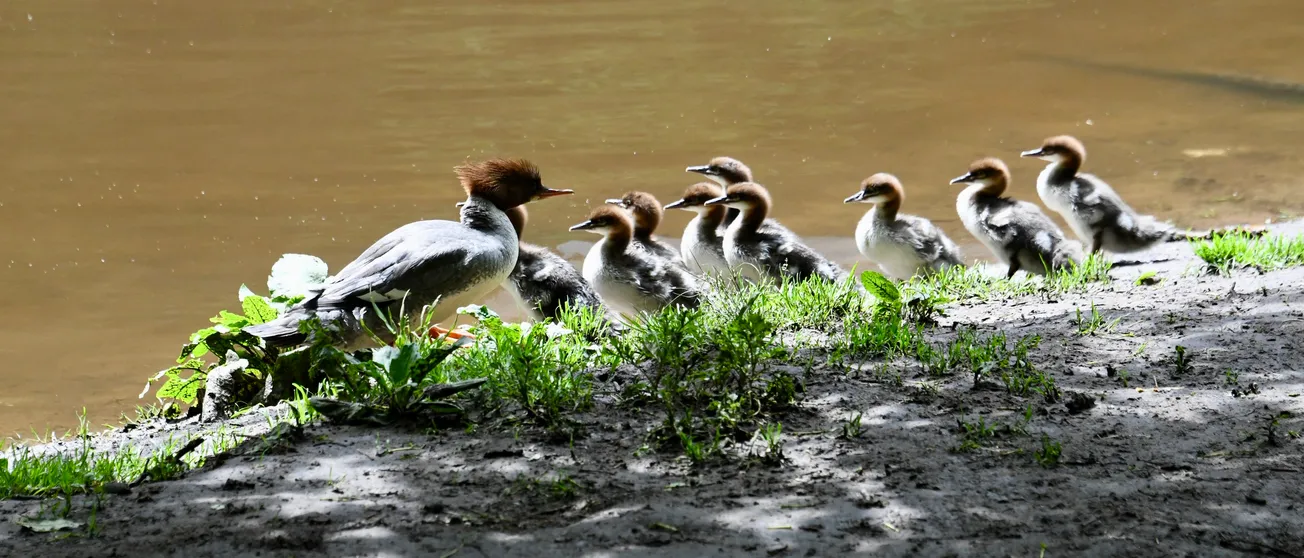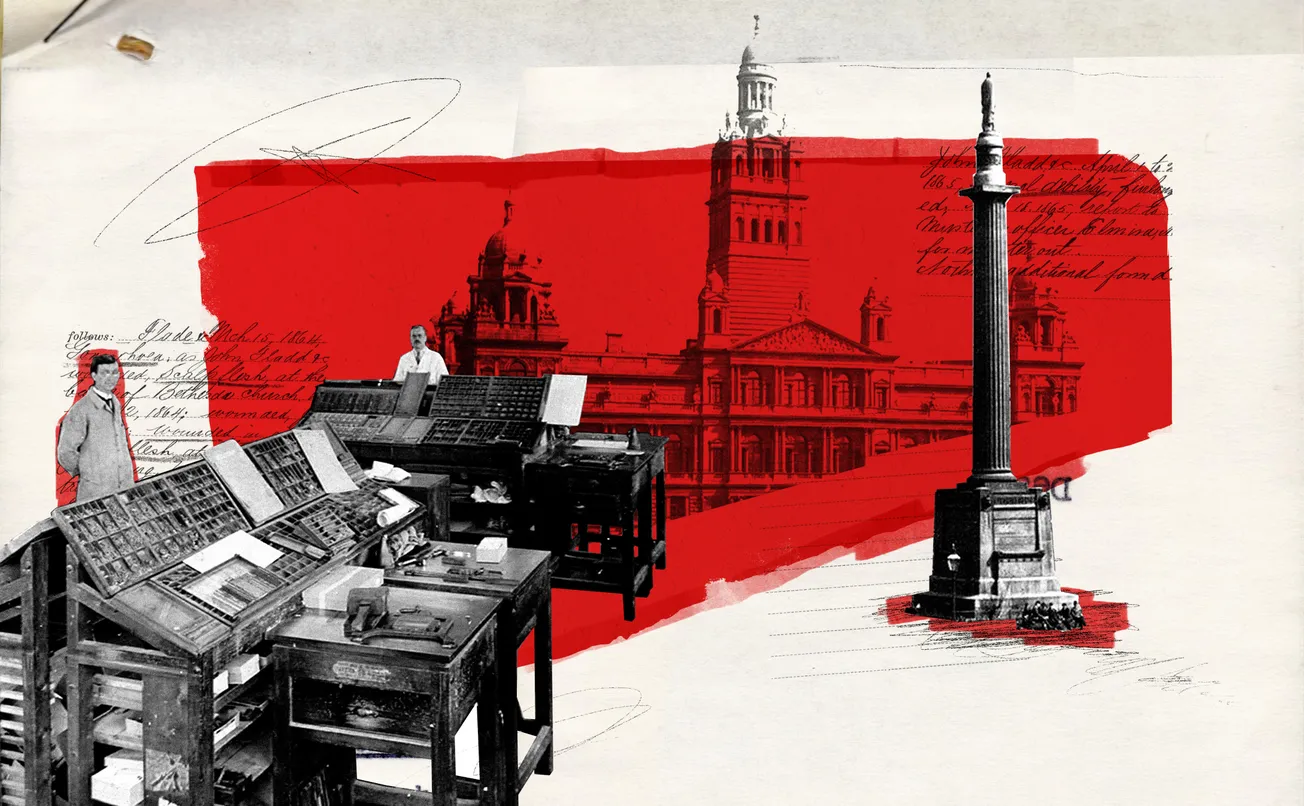“These are the days you get out of bed for”, says Dr Willie Yeomans gazing out from the leafy banks of the Glazert Water, a tributary of the River Kelvin that passes through Lennoxtown just below the Campsies. It’s a chilly August morning but it’s dry; in front of us, dozens of tiny salmon are flopping around in large buckets of water. Alongside his team of scientists, Yeomans — the manager of the Clyde River Foundation (CRF) — has spent the morning hauling them from Glazert’s currents. They’re not catching them to consume, or anything like that. The group have spent the summer wading around the Clyde and its tributaries counting fish. But he wasn’t expecting to see this many; they were taken from a “glide”, a slow-moving stretch of the river with fewer large rocks — typically not prime real estate for a young salmon. And this year they’ve been finding them in places they never have before, including above weirs previously thought un-leapable to the high jumping salmon.
The fish they’re cataloging today are sprightly ones: ‘fry’ — up to one year-old salmon — and parr, which are aged one to three. Their parents likely got here from feeding grounds off the shore of Greenland, over 1,000 miles away, navigating treacherous waters — and that’s before they reached the pollution and discarded junk that litter the Clyde (that’s nothing, Yeomans tells me — Glasgow’s eels are thought to spawn in Bermuda).
Once in Glasgow’s most famous waterway, the adult salmon would have taken a left at Partick and entered the Kelvin, overcoming broken weirs, exhaustion, low water and predators like otters and poachers (Yeomans is cautious to tell where the best pools are for salmon on the rivers, lest word get out), in order to lay their eggs in the Glazert. The Kelvin, says Yeomans, wryly pointing at Buckfast bottle, is the “most urban Atlantic salmon fishery in the world”.
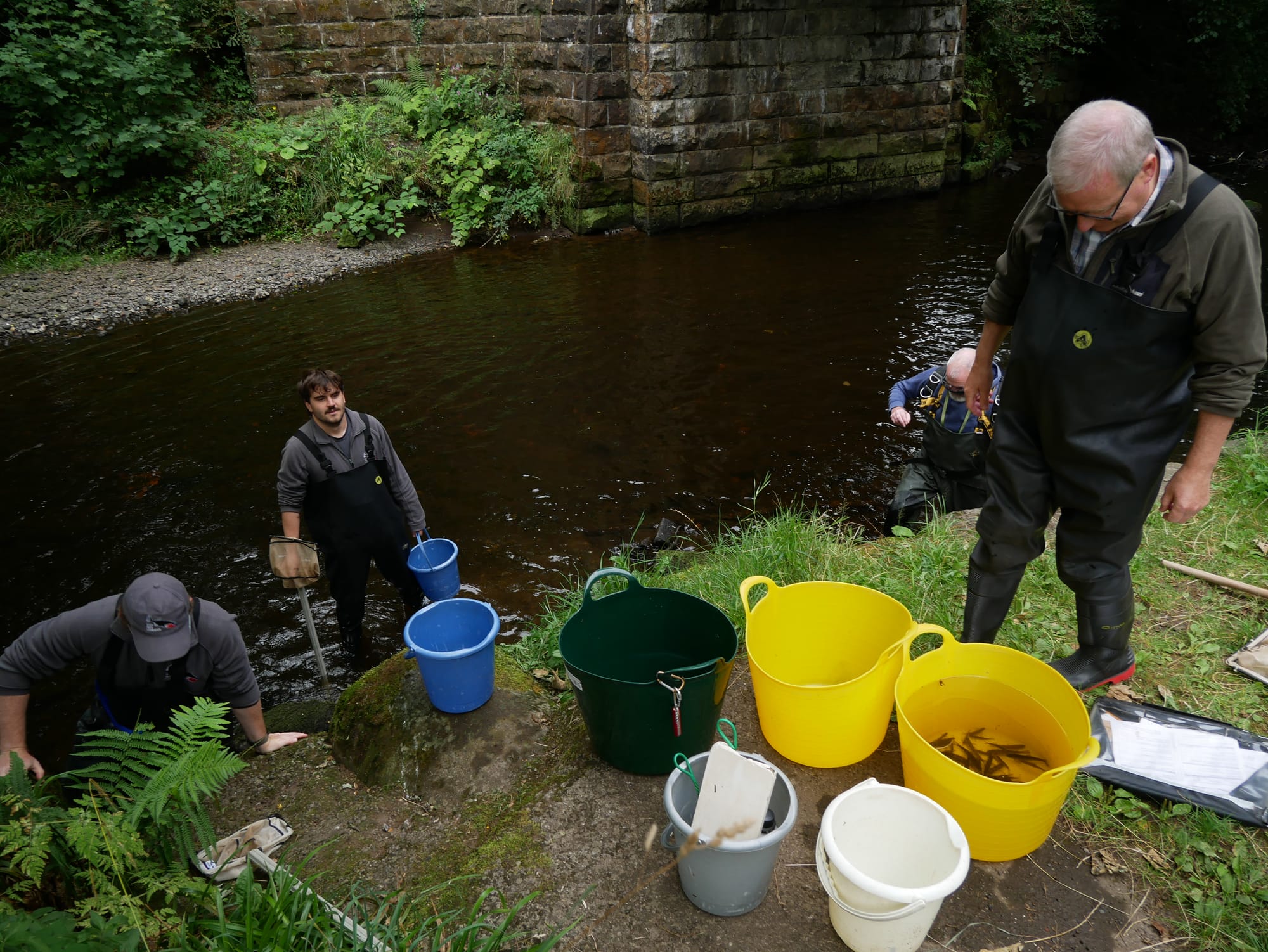
This status is hard won. You see, the Kelvin has undergone one of the city’s most remarkable regenerations in just half a century. Through changes in industry and priorities this river system has been returned from the brink.
But now a mysterious pollutant threatens to derail the progress.
Fancy more news from The Bell in your inbox? Three days a week, we send you a carefully chosen story, plus our best scoops, investigations and recommendations. We prioritise quality over quantity and everything we send is in your emails — just click the button below to join our free mailing list. That's it: no ads, no spam, no nonsense.
Industrial fall, natural rise
The year is 1841 and Edward Collins is in a good mood. The entrepreneur has just left his Kelvindale mansion to visit his new paper mill round the corner — the paper mill his grandfather abandoned eighty years prior in favour of a site in Dalmuir. But both he and his father are long dead, so last year, Collins made the decision to relocate their thriving paper-making company back to its old spot on the banks of the River Kelvin at the Kelvindale mill. He wants to be among the roar and bustle of Glasgow, this industrial powerhouse. It’s only appropriate that Collins & Sons returns here, to the beating heart of Scottish papermaking, for its next era.
He trots past the neat row of workers’ residences and there it is, his birthright; the handsome sandstone factory, with sunlight glinting off its big windows. The churn of machines and the water powering them is audible even from here.
After he’s made his rounds, thinks Collins, maybe he’ll walk down the Kelvin itself, call in on some neighbours down the way — although the river has been offputtingly pungent lately…
That stench lingered over a century, rendering the river banks a place local students would avoid. As a zoology undergraduate in the 1960s, Professor Roger Downie “wouldn’t go very close to the Kelvin”, he tells me, because of the “absolutely ghastly stench”. Edward Collins and his fellow industrialists were responsible for such a smell. While the Kelvin’s power enabled Glasgow’s 19th century factories and locomotives to reach full steam as it were, all the effluence, plus human sewage, that was being pumped into the Kelvin meant the river’s health did not mirror that of the city’s economy.
When Downie was studying at the University of Glasgow, the Dawsholm and Kelvindale paper mills were still pulping and pressing. Mills in some form have been harnessing the Kelvin’s power for the last 1,000 years. Soluble pulp and dyes would empty into the river and ferment while absorbing much of the oxygen and stinking up the place. Plus, the Kelvin and many of its tributaries is a “wholly artificial system”, according to Willie Yeomans, due to canalling, straightening, and dredging at various points over its history. All this made the environment “inhospitable to fish and other riverine life” according to lamprey biologist John Hume.
By the time the mills closed, in the late 1960s and 1970s, salmon had been extinct from the Kelvin and all its tributaries for at least a century. The fishy marker of a river’s health was long since forgotten in Glasgow, save for its starring role in the miracles of St Mungo and, consequently, our coat of arms.
But with reduced industrial pressure on the river, within twenty years, nature began a bounce back. It’s not quite as simple as ‘close the mills and the fish will come’, Downie cautions me, but the impact was striking. First came the trout, which require relatively clean water and an abundance of invertebrates to feast on. Bird populations grew — Professor Downie says this is the most visible sign of a waterway’s health. Oxygen levels recovered and as the end of the 20th century drew closer, life proliferated. At the same time, Downie explains, human environmental movements were starting to take off. Pipes spewing harmful chemicals into rivers were diverted to treatment plants and three weirs on the Kelvin were removed.
Now, there’s some mystery as to when the first salmon returned to the Kelvin. There are reports from newspaper archives of Clyde salmon being caught in the early 1980s, with some likely venturing up the Kelvin. People have told me about a chance photograph from 1983 that changed the narrative of the Kelvin from a dead river where only a strange sludge worm could survive (tubifex, if you’re wondering), to one that was very much alive. But evidence has so far eluded me. The earliest image of a Kelvin salmon I can find is this 1994 shot.
The story goes that a Glasgow City Council official was sent to survey an old weir. The photographer clicked the button, went to get the snaps developed, and only then realised what they had captured: a leaping salmon. Previously extinct for over 100 years, the king of fish was back in the Kelvin. Since then, the Kelvin has been positioned as the wild and walkable cousin of Glasgow’s polluted and underutilised Clyde. But that reputation could be in jeopardy.
‘You get the river you pay for’
On 16 June, Sally Johnston’s phone started blowing up.
“I’ve got dog walkers, I’ve got anglers, I’ve got press all going ‘what is this?’”Johnston says, talking to me from under a canopy of loud, proudly unruly hair. We’re on the Kelvin walkway having met at Ha’penny Bridge House, it’s a balmy day so I’m grateful for the shade; Johnston is wearing a camouflage jacket to protect from the wind. Or, perhaps, general surveillance; the chair of the Friends of the River Kelvin lowers her voice for the next part of the story, careful not to be overheard. The reputation of the Kelvin is at stake.
This is because on 16 June, environmental charity FIDRA released data from a study which looked at the levels of a harmful ‘forever chemical’ — trifluoroacetic acid, or TFA — in UK rivers. TFA is part of the PFAS family of chemicals, and although long-term health studies are yet to be carried out, scientists know TFA builds up in our blood and that of animals exposed to it.
FIDRA’s results found that the Kelvin had not just recorded the highest concentration of TFA in the country, but also the second highest level anywhere in the world. There is still much to be understood about TFA, but it’s considered the most prevalent ‘forever chemical’, and its environmental presence is only increasing.
For Johnston, who, along with fellow volunteers, regularly measures aquatic insect populations, cleans away litter from the river, and engages in a spot of ‘balsam bashing’ (cutting back stocks of the invasive Himalayan balsam plant), this was a gut punch. The river that had made such a public and visible comeback has a silent problem. As the tag ‘forever chemicals’ suggests, once in the environment, toxins like TFA hardly break down, continuing to build up in the water and marine life. As someone who had recently enjoyed my first ever fishing trip along the Kelvin’s shores, this came as quite the unwelcome surprise.
Perhaps the worst part for Sally Johnston is that they still can't identify the source of the pollutant. Samples for the study were taken down at Partick Bridge, right at the mouth of the river, meaning the provenance of the TFA could be anywhere between there, Kilsyth at the source, and beyond. How can you stop a toxin if you don’t know where it’s coming from? TFA is typically found in some pesticides, refrigerants, and pharmaceuticals, but how they got in the Kelvin is anyone’s guess.
Johnston often walks her friend’s typically-mischevious border collie, Hendricks, down by the river. He’s joined us today, much to my delight, but with the unknown pollution source lingering in our minds, seeing Hendricks take a quick bath doesn’t feel great. It’s a strange contradiction that one moment I can be on the river, seeing kingfisher, otter prints in the sand, and heron catching eels, only to be worrying about PFAS chemicals and our exposure to them.
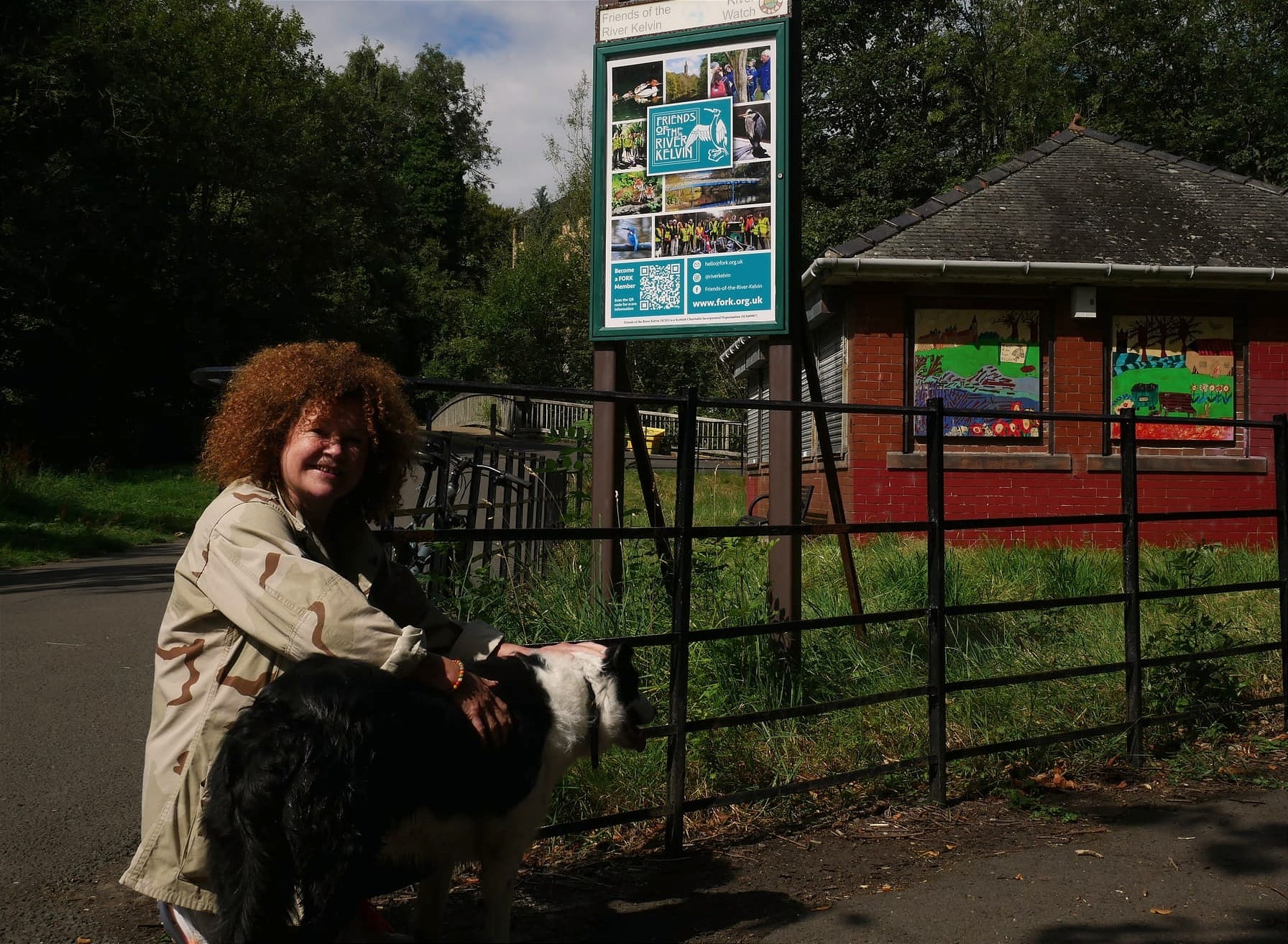
I ask Professor Downie what all this will mean for the Kelvin. He actually says that invasive species (think hogweed, knotweed, and the aforementioned Himalayan balsam) pose the most threat to its health. That, combined with raw sewage and more intense summer heat starving a river of oxygen, are more what keeps him up at night. But the biggest indicator of the river’s health is in the material world: the budget allocated to it.
“You get the river you pay for”, says Willie Yeomans. Much of the Kelvin’s future as a natural haven depends on dismantling all the clutter added to it by humans over the centuries. And this costs. For example, the price of removing a weir — which can block salmon migratory routes — vastly depends on its position. One weir can be decommissioned for £20,000 and “open up 60 kilometres of river”, while another can cost £1m and open up just 10. However, with each weir that is removed on the Kelvin, salmon have been enabled to “recolonise” more and more of the river.
There are still about 30 weirs across the entire Clyde system, and some, like Sally Johnston and Professor Downie, believe that they could be used to generate local hydro-electricity while fish ladders are installed, allowing salmon and sea trout to climb them and carry on their journey. Sometimes nature has already found a way; on our walk, Johnston points out a broken weir, located just where the Kelvin undercuts Great Western Road. Gaps in the old stones allow salmon to wriggle through.
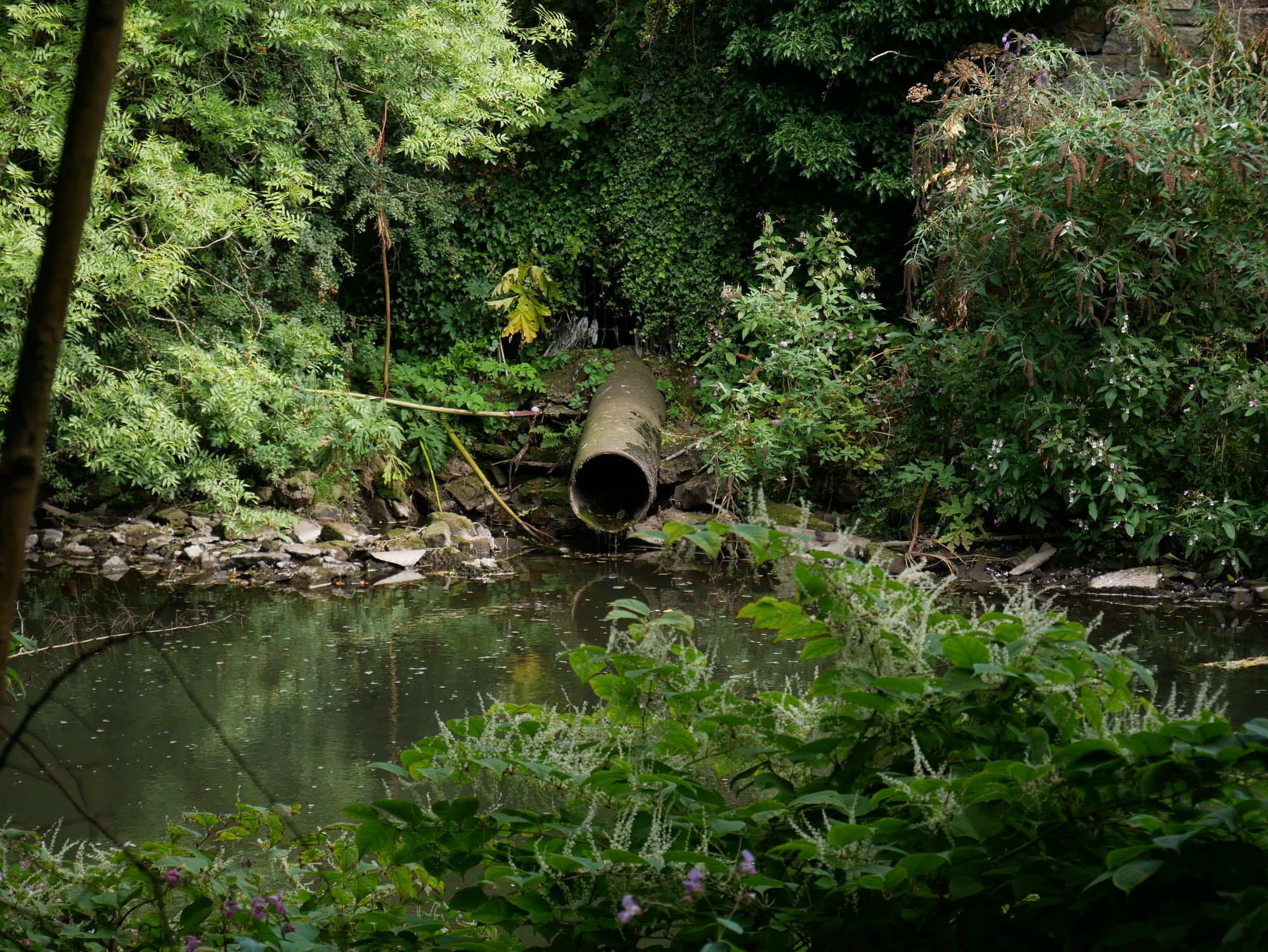
In other European cities, river health is back on the priority list. In Paris, the Seine’s high-profile (and eye-wateringly expensive) Olympic restoration has resulted in a swimmable public body of water for years to come. Vienna’s residents have long enjoyed dips in the Danube. At home, despite its mucky reputation, the Clyde proper is undergoing a clean up, although its unlikely swimmers will be entering it in next year’s Commonwealth games. My dream of the Govan Graving Docks getting transformed into some sort of aquatic sport mecca remains a pipe one for now.
But conservation strides can be fragile. Sally Johnston told me about worryingly low insect counts in Friends of the River Kelvin’s latest measurements. Word of a fish die-off, maybe due to heat, perhaps sewage, has been mentioned to me by a few people I’ve spoken to. The biggest enemy faced by Glasgow’s waterways is complacency. Salmon’s return, and that of all the hallmark riverine species, is to be cherished. But rivers are never in stasis and it will take a citywide effort, not just that of a few dedicated groups, to ensure the Kelvin keeps its flow.
Johnston told me about an outreach day Friends of the River Kelvin did with a school around a decade ago. There was a boy who initially wasn’t keen, then, after 10 minutes of persuasion, he found a species of beetle that “had never been recorded on the Kelvin before”. Now, that boy is a young man and makes films about conservation. “That’s the impact”, Johnston says, not just of her work, but of a healthy river on its city’s residents.
Really hope you enjoyed Calum's article. Remember, if you want more weekend reads and essential Monday briefings straight to your inbox, it's free to sign up to The Bell.
Comments
How to comment:
If you are already a member,
click here to sign in
and leave a comment.
If you aren't a member,
sign up here
to be able to leave a comment.
To add your photo, click here to create a profile on Gravatar.

